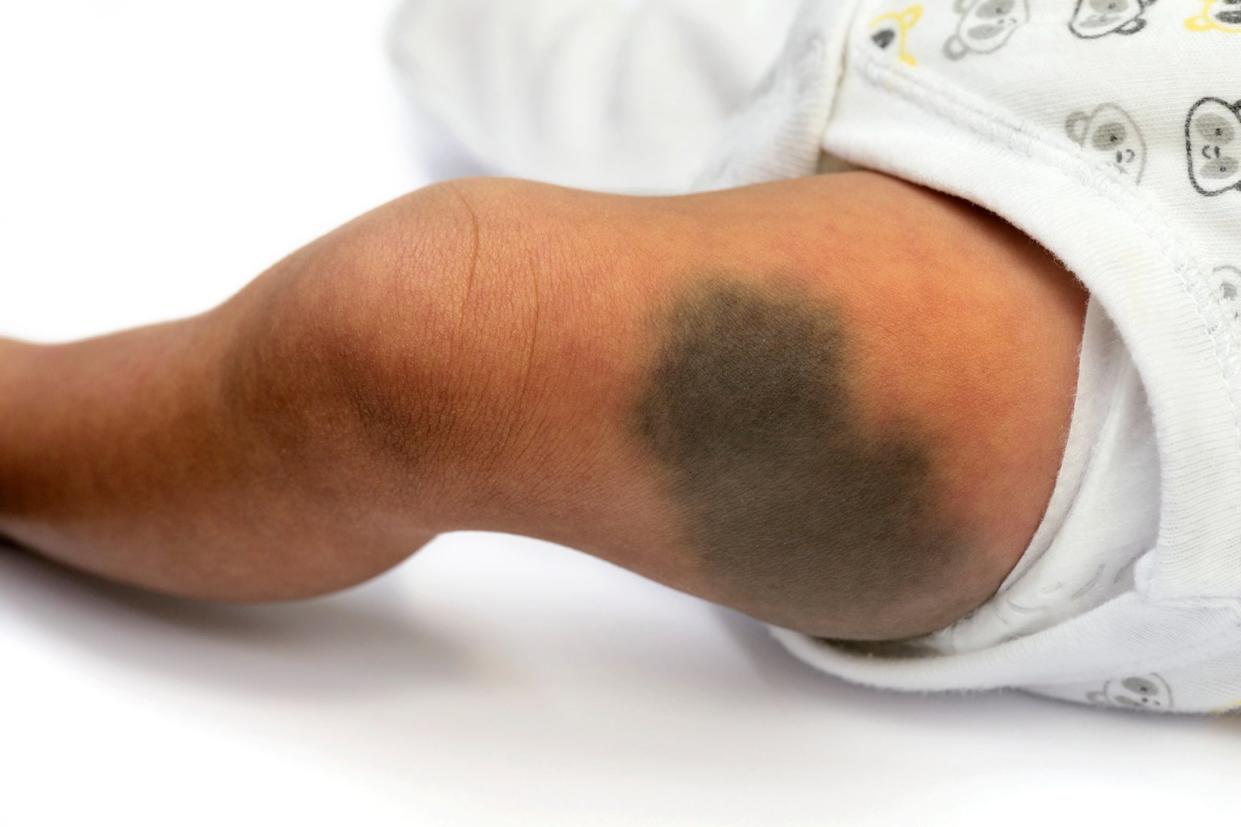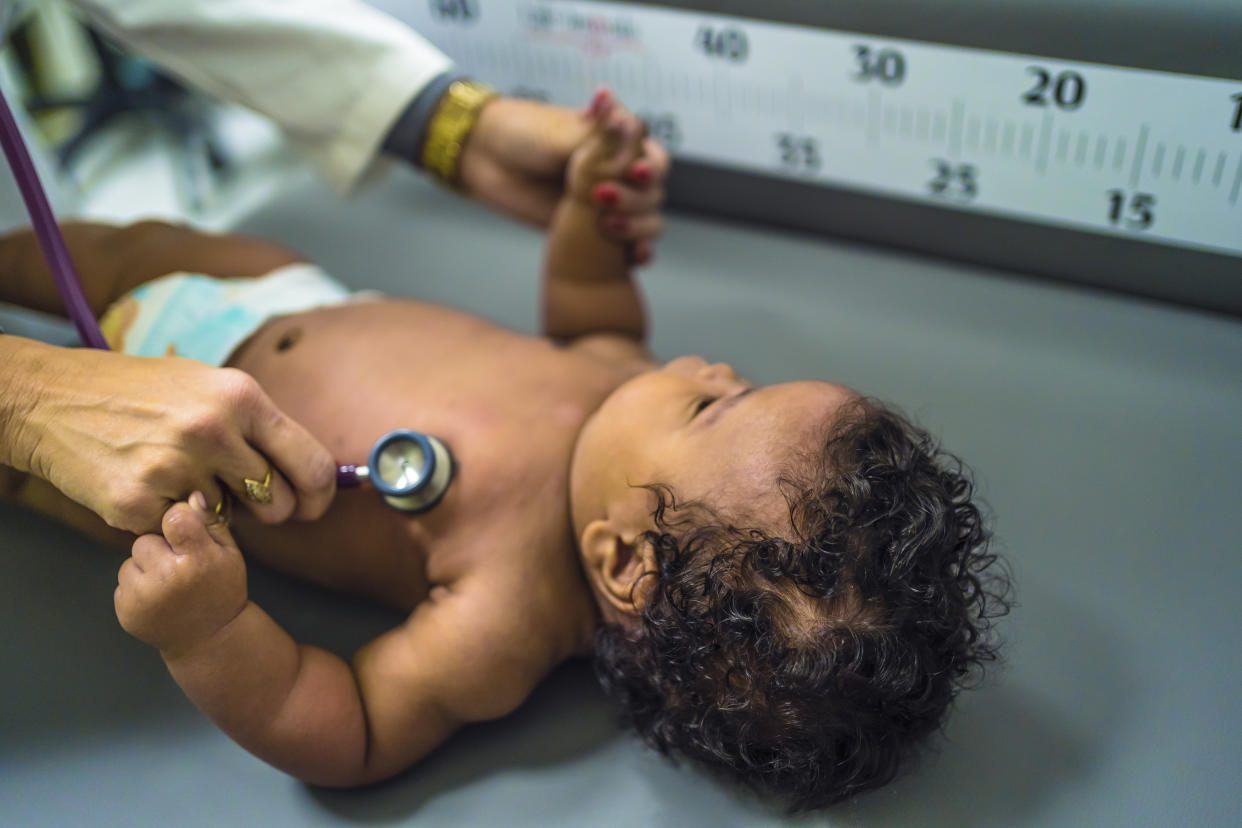What is a 'blue spot' birthmark?

Birthmarks are very common, with more than 10% of babies born with some type of birthmark. They come in a huge variety of shapes, sizes, colours and textures - however, one type of birthmark is not well-recognised among medical professionals despite it being very common among babies of colour.
A blue spot birthmark, known as congenital dermal melancytosis or Mongolian blue spot, is most common in babies of African or Asian descent. However, they can occur in babies of any race or ethnicity.
The mark appears as a blue-gray spot or patch that ranges in size. They can be small, measuring just a few millimetres, or very large, covering areas of the body, and can slowly fade or become less prominent over time.
However, because of the blue-gray appearance, they can sometimes be mistaken for bruises. When this occurs, it can lead to devastating impact, such as that on Laxmi Thapa, a mother who was recently arrested after her six-month-old son’s birthmarks were mistaken for bruising.
What happens when blue spot birthmarks are mistaken for bruising?

In a BBC report, Thapa, who is Nepalese and lives in Basingstoke, spoke of her ordeal and said she was treated "like a criminal" by medical staff and police, who suspected her of child abuse because they misdiagnosed her baby’s birthmark as bruises.
This was despite the fact that her son’s birthmarks, which appeared on several parts of his body, had been noted on his medical records after he was born last November.
Thapa said she spent 20 hours in a cell at Basingstoke Police Station. She was later released pending a medical report. A visit to her home by social services then determined her son was not in any danger and scans on her son showed no injuries.
Police confirmed that no assault had taken place. Hampshire Hospitals NHS Foundation Trust would not comment on individual cases, but said staff followed guidelines and added: "Differentiating between suspected bruising and Mongolian blue spot is complex, and protocols have to be followed."
Campaigners including Faye Wheeler, founder of Blue Spot Campaign, are calling for more awareness about the birthmarks. She told Yahoo UK that she has received many other reports of experiences similar to Thapa’s story from other parents.
"I am already supporting a new family going through a very similar experience to Laxmi’s," she says. "There is misinformation on the NHS website that Blue Spot ‘is present at birth’. This is not true.
"Health professionals working in the community that turn to the website for guidance are then misinformed. The first paediatrician that checked my son said ‘I’ve never heard of it’. I would like to see much more training on this."
What is the key difference between a blue spot birthmark and a bruise?

Wheeler explains: "The key difference between blue spot and a bruise is that a bruise changes colour quite quickly over time. Bruising can turn purple, green and yellow. Blue spot tends to stay blue or grey. Blue spot can become more prominent and more can appear or it can slowly fade and reduce in size. But it is very gradual."
She hopes to encourage more research and data collection about blue spots, so that more medical staff can be trained about it.
"There needs to be a separate protocol for the possibility of it rather than triggering safeguarding which leads to a complete waste of resources," she says. "Social services and the police do not need to be called until medical tests are completed as that is when the decision can be made as to whether their involvement is necessary.
"Children undergoing tests in hospitals are safe. The information on the NHS website needs to be updated. I would also like to see anyone working with children to have awareness included in their training, for example, child care courses in colleges.
"The statistics I have seen are that blue spot appears on 80% of mixed ethnicity, Black and Asian children. It also appears in 10% of Caucasian children."
Wheeler continues: "With an increasingly more diverse society, more must be done. I have been gathering research for the last four years. I receive no funding for the work that I do and I manage this around my part time position as a psychotherapist and I am also a mum. Securing funding would allow my research to continue and support families through a very traumatic time."
Read more about health and wellness:
Your baby's eczema may be a sign they'll develop asthma and allergies in later life (Yahoo Life UK, 5-min read)
Feeding your child peanuts from a young age can help reduce allergies later, new study claims (Yahoo Life UK, 5-min read)
Pollution could put children at greater mental health risk, study says (Yahoo Life UK, 5-min read)


